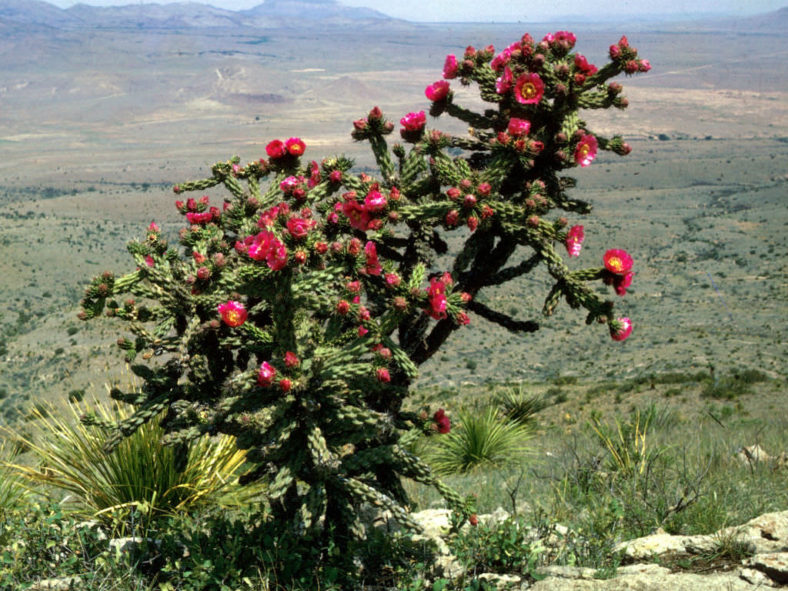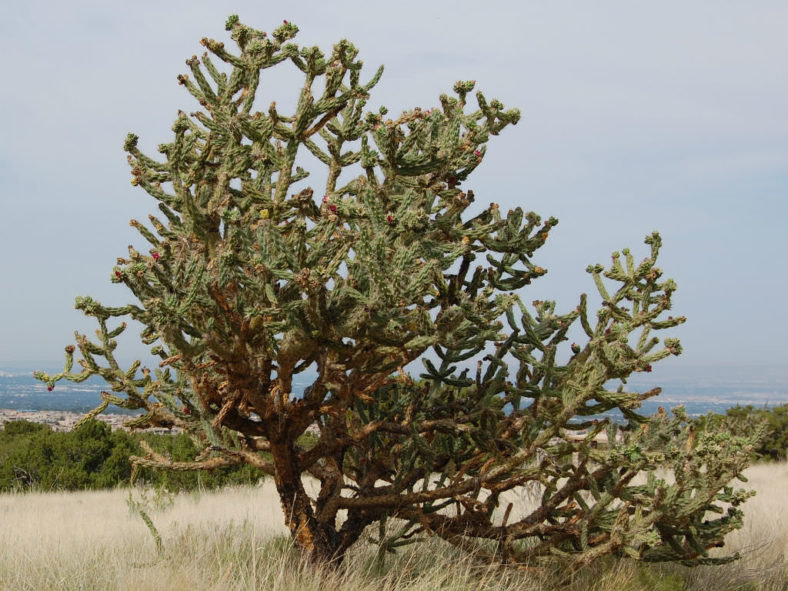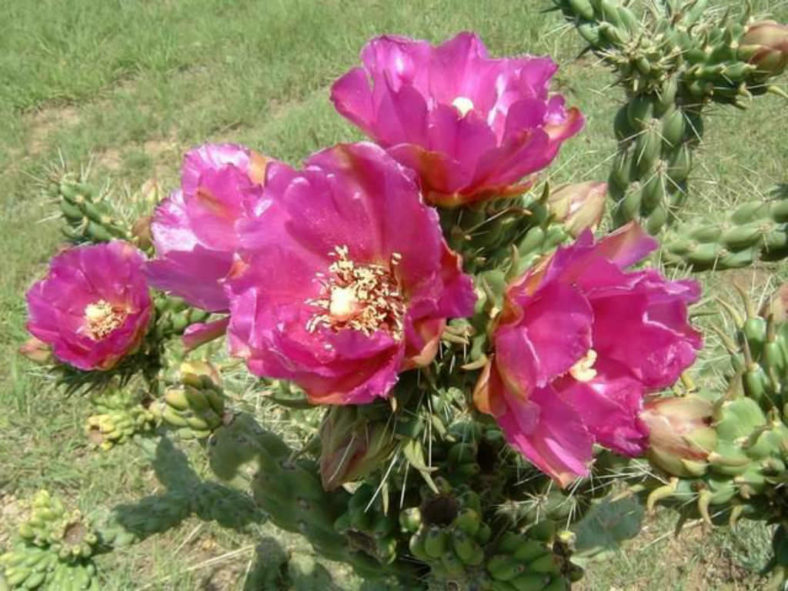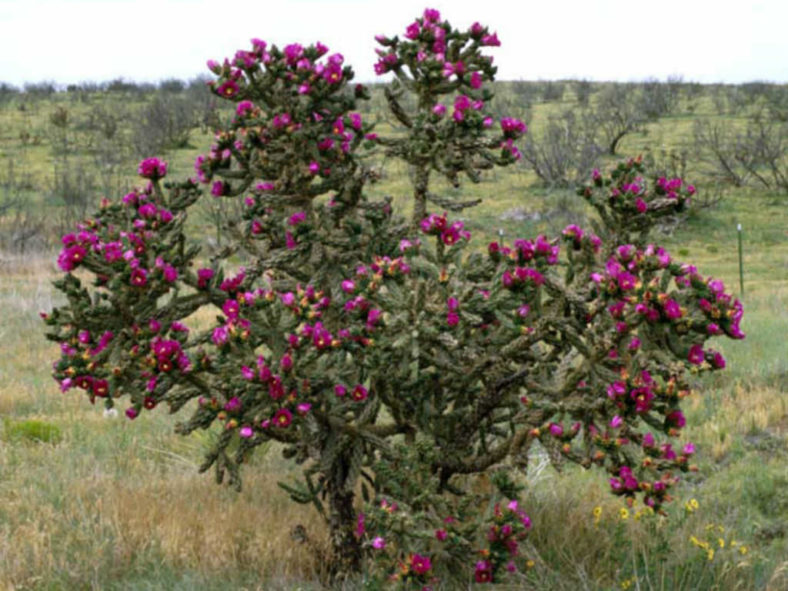Scientific Name
Cylindropuntia imbricata (Haw.) F.M.Knuth
Common Name(s)
Candelabrum Cactus, Cane Cholla, Chainlink Cactus, Coyote Prickly Pear, Devil's Rope Cactus, Giant Tree Cholla, Tree Cholla, Walking Stick Cholla
Synonym(s)
Cactus imbricatus, Cereus imbricatus, Cylindropuntia imbricata subsp. imbricata, Echinocactus imbricatus, Grusonia imbricata, Opuntia imbricata
Scientific Classification
Family: Cactaceae
Subfamily: Opuntioideae
Tribe: Cylindropuntieae
Genus: Cylindropuntia
Origin
Cylindropuntia imbricata is native to the southwestern United States and northern Mexico.
Description
Cylindropuntia imbricata is a tree-like cactus with a short woody trunk and several upright candelabra-like branches. It can grow up to 10 feet (3 m) tall. The branches have 10 to 30 fairly short, white or light brown spines per areole that allow the green stem color, purplish in times of cold weather, to be clearly visible.
The attractive violet flowers are followed by knobbly orange fruits that stay attached to the plant for many months.

Hardiness
USDA hardiness zones 4a to 11b: from −30 °F (−34.4 °C) to 50 °F (+10 °C).
How to Grow and Care
Though the large variety of species within the Opuntia genus means different, Prickly Pears may need slightly different care. All are desert cacti that need lots of sun, light, and very little water. So, if you live in a hot, arid area, these plants can generally be planted outside, left alone, and enjoyed.
These cacti will grow just fine in a garden but can also be grown in pots. To repot, ensure the soil is dry, remove the pot, and remove the old soil. After treating any cuts with fungicide, place the cactus in a new pot and backfill it with potting soil. As with a new cutting, ensure not to water a newly repotting Prickly Pear briefly to avoid rotting its roots.
Opuntia can propagate either by cuttings or by seed. To propagate by cuttings, sever pads from a plant and let them dry to heal the wounds. Then, place the plants in dry soil and refrain from watering them until they begin to grow to avoid rotting them.
Learn more at How to Grow and Care for Opuntia.
Links
- Back to genus Cylindropuntia
- Succupedia: Browse succulents by Scientific Name, Common Name, Genus, Family, USDA Hardiness Zone, Origin, or cacti by Genus
Photo Gallery
Click on a photo to see a larger version.


